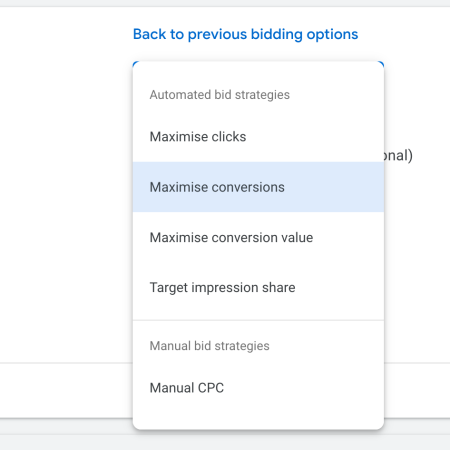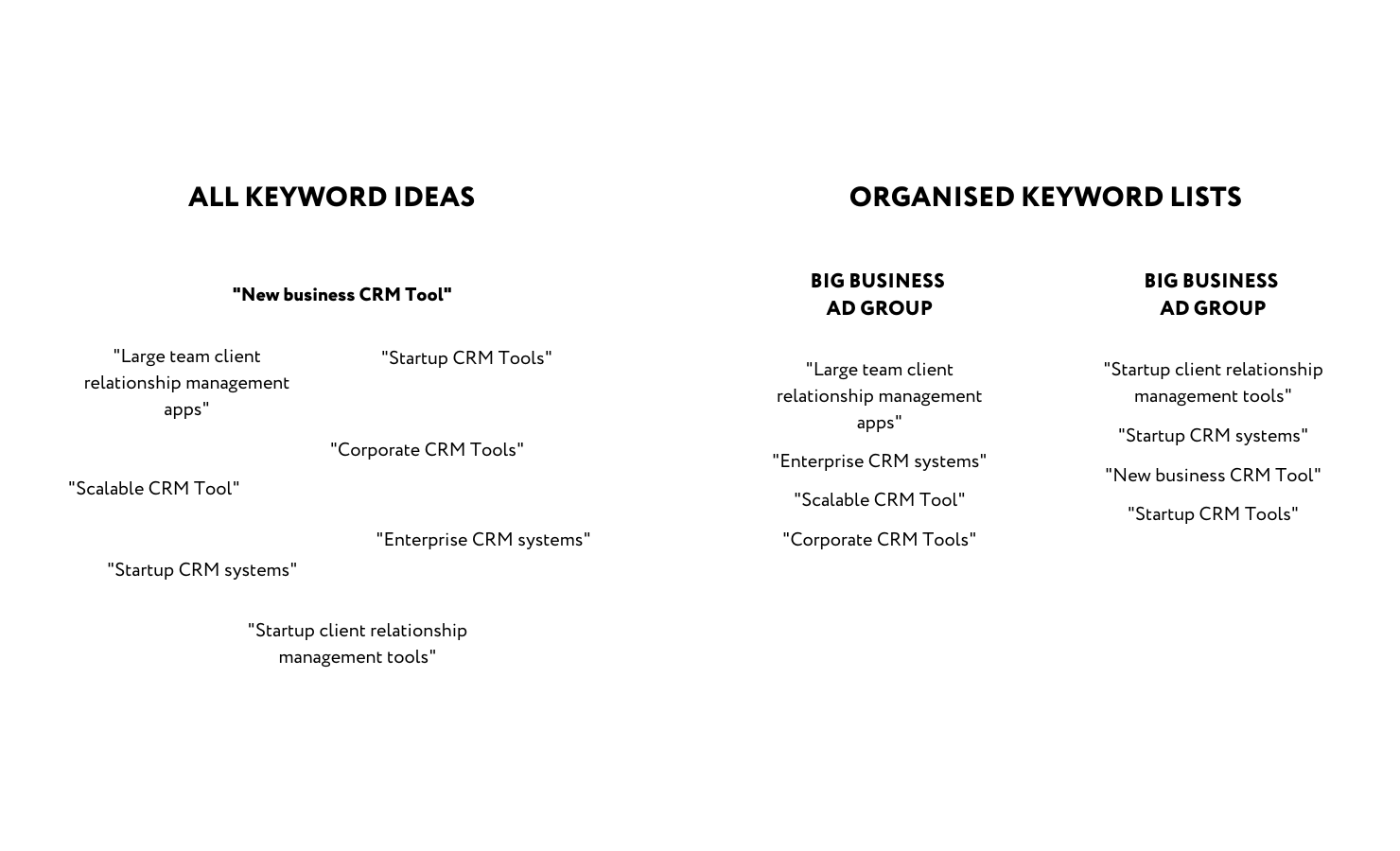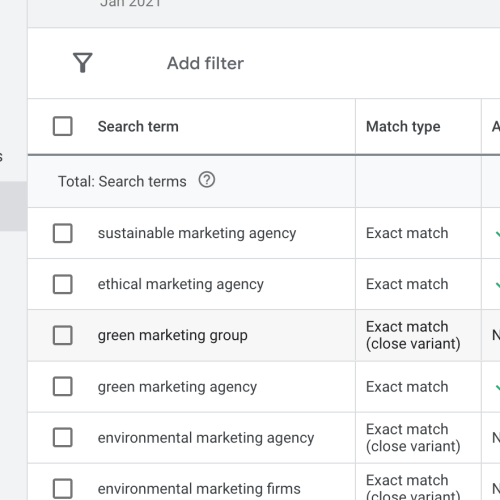Perhaps you’re already running Google ads but struggling to get to profitability, or maybe you are already seeing some decent returns but feel there’s more gold in them there mountains to claim!?

Maybe the Google Ads interface just seems like an alien language to you? Are you getting loads of conversions or are the google reps lying to you?? (The answer to the latter is almost always yes!).
In this guide, I am going to delve into 7 key considerations when it comes to running Google Ads for a B2B tech brand. These are some of the most important levers to get right when building out Google Ad campaigns for the business-to-business technology space.
This B2B tech niche can often naturally have a higher average cost per click and so it’s extra important that you invest properly into doing Google Ads right. But don’t worry, now you have a guide. Guides make everything ok.
I deliver this guide to you based on years of experience managing countless clients and 100’s of thousands of pounds/dollars/euros of budget through my agency Snowball Creations. My team currently delivers on average a 5.1x return on ad spend for B2B Google Ads clients. So these strategies for B2B work. Hopefully, they come in handy for you too!
1. Lay proper ‘technological’ groundwork
Before we get into the depths and nuances of Google ads promoting a B2B tech company, let’s get the basics in place.
Proper conversion tracking is the foundation for building your Google Ads machine. A bad conversion of just a site page visit to your contact page could lead to wrongly optimising your ads and incorrectly judging their performance.
Your goal is to have a conversion setup with only end goals in mind. For example with b2b tech brands, this is often a free trial signup, account registration or some kind of download of an email magnet. Generally speaking, it will be gaining a new user in full or collecting their contact information like an email address to be able to then sell to them later.
List out your site conversions
Start by listing out these end goals by going page by page through your website. Each potential conversion is great additional data and so worthy of being tracked.
If you already have your goals setup within Google Analytics you can import them over to Google Ads.
Don’t forget some smaller secondary conversions like an email address or phone number in the footer. These can be tracked using systems built into Google Ads or connected to it, in particular Google Tag Manager and Google’s own phone tracking.
(Warning: Google reps love to give bad advice on this topic to set up all kinds of goals like visiting a contact page. This makes it look like you’re making tonnes of conversions, when in reality, these early steps in the funnel are ultimately worth almost nothing to you)
2. Complete Google Ads B2B keywords
Keyword research and match type selection is a huge topic. Whether to select broad, phrase or exact keyword match types for example is a whole blog post in itself. So we won’t look to cover it all here. Though the topic is something that should have real-time and effort invested into nonetheless.
For this guide, I will focus on one concept that I believe to be one of the most crucial when it comes to B2B Google Ads. That is ‘User intent’.
By user intent, I mean the intention that a user has when sending that search through Google.
What is it that they’re actually looking for? What is their intention behind the search?
Your goal with Google Ads is to use your budget as efficiently as possible and so focus on the very best clicks possible. e.g. the clicks with the user intent that’s closest to your solution as you can find and funnel it into perfect ads for that search. High user intent to solve the problem you satisfy is how we find your target audience through Google.
Full-intent keywords in practice
Let’s say for example you’re an American tech company selling the next big CRM tool to make client management a breeze, in particular, for smaller startups who are looking for a quick, cheap, simple solution and don’t need the more advanced features. Let’s call it ‘CRM Super Powers Inc.’. Catchy right??
You want to find users who are looking for a CRM solution but specifically those users who are in charge of startups and who are looking for a CRM that fits your value proposition.
So examples of incomplete intent keywords:
CRM systems
Best CRM systems
Top CRM systems for USA
Best startup tools
These are all potentially ok searches, but they’re not complete. Complete is where you have the full intention of the user match up to your value proposition.
Here are some examples of complete user intent:
CRM systems for startups
Low cost CRM software
Simple CRM tools
Small business CRM software
These all both incorporate the fact that the user is searching for a CRM and also the type of CRM that this company focuses on.
(Key point: What a complete user intent keyword actually is, varies greatly for each business in Google Ads but often involves the main value you create and then the secret sauce about how you deliver that value differently.)
3. Search is your friend
When it comes to Google Ads, you have a variety of campaign types available from Display, to Video, Shopping and more.
With B2B tech companies, you should first confirm whether your product or service is something that people actually Google for. If they don’t then Google can still play a part in your marketing mix but you should really likely look to display networks.
When I work with clients on Google Ads, one of the first steps is to learn about their business and then recommend which platform is right for their business. If users in fact don’t yet Google to solve the problem you focus on then I’d likely recommend LinkedIn Ads instead.
You can read more about LinkedIn Ads and the power behind them here.
Assuming your users do use Google to solve the problem you satisfy then definitely use Google Ads! And there is one campaign you should be focused on with B2B tech. That is Google Ads Search.
Google's 'Search Campaign' definition
Here’s Google’s summary on Search Campaigns
“Search campaigns are text ads on search results that let you reach people while they’re searching on Google for the products and services that you offer.
It’s great for driving sales, leads or traffic to your website, as you can show your ads to people who are actively searching for your products and services.”
Our 'Search Campaign' definition
Search campaigns are ultimately the weapon of choice for pretty much all B2B clients that Snowball Creations, my agency, works with. They offer extremely high intent to solve the problem in question if done correctly.
This leads to the strongest conversion rates and so while they do come at a higher cost than the Display network or Youtube ads, we find them to be more profitable ads.
We might also consider Display ads as a form of remarketing especially as you scale up to larger budgets with your Google ads setup.
(Extra idea: Youtube should also get an honourable mention here as another opportunity for b2b tech but is normally something we look to as a secondary network once we’ve taken full advantage of Search.)
4. Clicks or conversions
Bidding strategies are how you tell Google what to optimise for when bidding. Each search that you try to show up for, you are entered into an auction with other B2B Google Ads users. Thousands of auctions occur every day for your account and how you optimise your account’s behaviour in them is crucial to find returns from Google.

For B2B technology-based companies, you are most likely looking for conversions into some form of user sign-up or email lead magnet. You’re looking for quality leads to feed into you or a sales team perhaps.
So of course your mind will head to thinking that it’s best to focus on a bidding strategy focused on conversions. However, this is a common potential pitfall that can destroy young newbie accounts.
Google will tell you that conversion-focused bidding strategies work from the beginning. Their reps will tell you it’s the best move. Their software itself will send you recommendations.
Conversion bidding needs data
The reality is that without already having conversion data through the account, the system will not have enough information to work. The entire system is based on an algorithm that uses a data set of conversions that already occurred and tries to find more that are similar. So if you have had 0 conversions into your user sign-up, then Google has no information to go off to get the lead generation firing.
So if you’re starting out the best initial bidding strategy is often actually ‘maximise clicks’. This is relatively idiot-proof to just get lots of clicks into your site. Once you then hit a certain threshold of conversions over a 30-day period you can then look to transition to a conversion-focused strategy. This may occur quickly if you’re an easy conversion like a free trial or may take longer if a higher ticket conversion like a lead worth £1,000+. It also depends on your budget, shock horror, bigger is better.
For B2B tech companies with a pricing structure for conversions that’s relatively flat, like say a single price for a SaaS app of £39 p/m, I’d recommend a simple maximise conversions strategy. All that matters for you is to get as many conversions as possible out of your b2b google ads budget. That’s it.
As the account matures you can then also add in a target CPA (Cost per acquisition) for Google to aim where you push it to achieve a lower CPA that’s at a level of profitability that you’re after.
If your pricing is more varied then you might consider ‘maximise conversion value’ instead. This focuses on the total value of conversions as a variable instead of just the total quantity of conversions.
For example, if that same SaaS brand had pricing for individuals, small teams and large teams for £10, £100 and £1,000. Google will give more weight to someone that converts on the £1,000 package vs the £10 package. Makes sense right?
5. Ad groups as ad groups
As we’ve discussed it’s worth investing the majority of your ad spend into search campaigns. One important part of setting up Google Ads campaigns correctly for B2B tech brands, that I see done incorrectly far too often, is the structure of ad groups.
Your ad groups are called ad groups for a reason. They are a group of keywords that are correct for a specific advert that has certain ad copy. So set them up as such!
Once you’ve set up your big list of perfect complete intent keywords for finding your target market, you will want to group them into ad groups. Each one should have its own unique intent and ad copy.

This all means that each keyword you’re targeting has an ad that is perfectly aligned with the intention behind that user’s search. This leads to the highest possible click-through rates which help drive up your quality scores and reduce your CPC (Cost per click)!
6. Copywriting done ‘right'
Copywriting has become arguably one of the most important factors in winning at Google Ads in recent years. Nailing your ad copy for your responsive search ads and elsewhere within the Google ads account for your b2b lead generation.
It’s a huge topic to go into and really is an area where professionals in paid advertising are extremely valuable.
The copy itself for your search campaigns you will be running that we discussed above needs to include headlines that match up to each specific ad group topic to cover the keywords included. Then beyond that, you’ll want to focus on various benefits, value, pain points and more around your brand that might encourage them to click on your ad over your competitors.
Maximise options available for AB testing
Also, make sure to really maximise the responsive search ad by generally aiming to use up all of the headlines and descriptions slots. We also normally set up two responsive search ads per ad group in order to allow for AB testing of our own on top of Google’s inbuilt testing.
(Opportunity: In the B2B space in tech there is often a lot of competition and so often an ad group made for competitors specifically with custom copy can be a great strategy.)
7. It’s good to be negative (keywords) in tech
If you don’t know what negative keywords are and you’re managing a Google Ad account then you’re not doing a complete job.
Harsh I know.
In the B2B technology space especially when working with B2B lead generation, the CPC can be high and so each time you show up on a bad search, you may be wasting £0.50 to £50 potentially.
There is often a higher average conversion value for B2B too though as the deal involves serving the needs of an entire business rather than just an individual. So this higher average CPC is profitable to pay still.
What you do need to be extra hot on though is avoiding those wasted clicks.
Negative keywords example
If we have a new CRM system for startups and so we set a keyword of CRM companies, in broad match.
This could have you showing up for “Free CRM Tools”, “How to build a CRM from scratch” or “Jobs in CRM companies”. These are all clearly bad intent searches that are likely to not convert into paying customers for you. Google ‘helps’ you by showing you in front of searches that are similar to the keyword you entered but this help can also be a problem.
So regularly checking the ‘Search Terms’ section of Google Ads is crucial to add negative keywords like say ‘Free’, “How to” and ‘jobs’.

These then stop you from showing up for these searches and so stops spending on the clicks, which in turn, allows for that budget to be used on the better searches available like “Best startup CRM tool”.
(Extra benefit: As it improves your CTR it also naturally improves your quality score which is pivotal in creating profitable Google ads campaigns.)
8. Help the robots out
You’ve done all of the above work.
You’ve got your tracking perfectly aligned with your true conversion goals.
You have a great list of full-intent keywords.
They’re set out into well-organised campaigns with ad groups for each intent and the right bidding strategies for your data.
The copy is beautifully written and enticing to your target audience.
You’ve helped to block the bad traffic with strong negative keyword game.
Great! This is just the setup though!
B2B Google Ads lead generation is a long play. It takes many months to build up to be a stable, scaled sales machine pumping out quality leads for your business.
You’re starting with a huge big net thrown out into the ocean of searches. Your job is to gradually narrow that down by culling the bad and adding more of the good!
There are countless other factors to consider in building and managing a Google ad account like extensions, devices, locations, time of day and week, other bidding strategies and the rest!
But hopefully, this guide gave you a starting point or some helpful pointers in the right direction for your own B2B Techy offering!
If you feel like you need more professional help then I’m here for you!
Get in touch and we’re more than happy to look over existing campaigns or start from scratch.
And if you did find this article useful then please do think to share it with someone else you know that might find it so too!